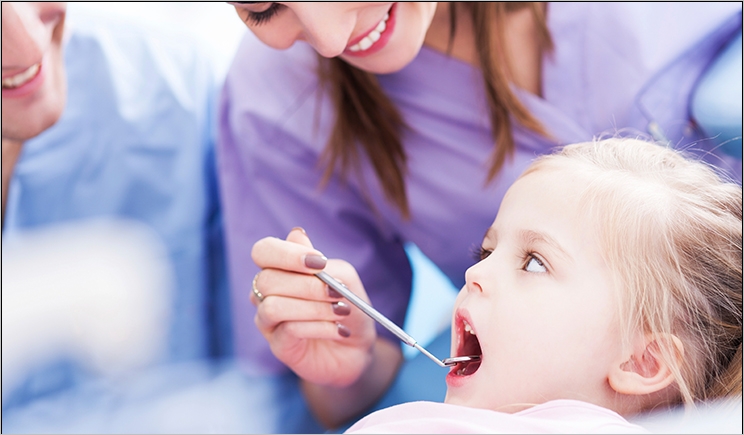
Each February, the ADA sponsors National Children’s Dental Health Month (NCDHM) to raise awareness about the importance of oral health. Founded in 1941, this is the 77th year of this event. This year’s NCDHM campaign slogan is “Brush your teeth with fluoride toothpaste and clean between your teeth for a healthy smile.” Is that the best we can do?
According to the Centers for Disease Control and Prevention, tooth decay is the most common chronic condition in children. Statistics show that one in five children ages 5 to 11 has at least one untreated decayed tooth. But decay is an outcome, not the problem. As a profession, we have been touting the same tired message with little change in the outcomes.
Most of us have heard that the recipe for insanity is to do more of the same thing while expecting different outcomes. Why do we think for the 77th year that this tired message will resonate and create change? Perhaps it’s time to change our thinking.
The title of an article published in 2012, “Access to Care! Missing the Point” by Scott Thompson, DDS, caught my attention. “None of our typical restorative efforts does anything to improve the oral health of our patients. The real problem, in my view, is burgeoning oral disease as a result of a deteriorating, much-sugar added diet and the lack of dental health education for our patients,” Thompson said.
Thompson discussed how few dental practices and practitioners have adopted a caries management by risk assessment (CAMBRA) philosophy. We continue with our same-old, same-old brush and floss and don’t eat sugar lectures, puzzles, and coloring sheets. Brush ’n floss, brush ’n floss, squawk! We need to kill that parrot.
“Dental Caries: A pH-mediated disease” is an important article with up-to-date caries philosophy information. Its major content is not about toothbrushes and floss. It talks about saliva as one of the body’s most effective means for protecting enamel from acid. Saliva serves as a pH buffer. When plaque pH drops below 5.5, tooth decay can occur.
It’s time to move our message into the 21st century. According to Jeanne Hopkins of HubSpot, there are 6.8 billion people on the planet. While 5.1 billion of them own a cell phone, only 4.2 billion own a toothbrush. So let’s play with these numbers. What if we offered an easy way for the public to measure their pH on their cell phones?
A team at AT Still University devised a series of text message programs designed to reach, educate, and remind patients and the underserved of our communities about preventive and ongoing initiatives of health and wellness. One of these is PH2OH. This innovation involves a mobile phone application that provides point-in-time measurements of salivary pH—the point where meaningful behavior change can happen.
Imagine children drinking something with lots of acid, like a soda or a sports drink. Rather than the usual brush ’n floss squawk, we can show them on their own cell phone what that drink is doing to their mouth. Next, we can give these young people a piece of xylitol gum.
They can then see for themsleves how their pH changes. They can test it over and over, and the app graphs the results over time. This shows children how they can affect their own health. They now own their health, which of course they always did. It goes from a squawking lecture to self-education.
What if the ADA looked beyond its cozy relationship with the brush and floss manufacturers and formed an alliance with cellular carriers such as Verizon and T-Mobile to make this app readily available and get the word out? The brush and floss makers would benefit, and we may move the needle on reducing the incidence of caries like never before!
Maybe in NCDHM’s 2095 campaign, 77 years from now, we will have created a caries-free world. Innovative thinking and changing habits could be possible. We can figure out a new slogan.
Ms. DiGangi believes dentistry is no longer just about fixing teeth. Dentistry is oral medicine. Her work helps dental professionals embrace the opportunities and understand the metrics that accurate insurance coding provides. In fact, the ADA recognized her expertise by inviting her to write a chapter in its CDT 2017 and 2018 Companion books. Patti holds publishing and speaking licenses with the ADA for Current Dental Terminology, 2018 as well as SNODENT, 2018 diagnostic coding. She is the author of DentalCodeology, which is a series of easy-to-read, bite-sized books. Her latest brand extension, The Dental Codeologist Community, was launched in August 2017. Dental Codeologists have a voice and choose to shape the future of coding and healthcare. She can be reached at dentalcodeology.com.
Related Articles
Underserved Families Still Face Major Barriers to Dental Care
National Children’s Dental Health Month Fills Chairs and Important Policy Gaps
17 Oral Health Nonprofits Receive $85k in America’s ToothFairy Grants











